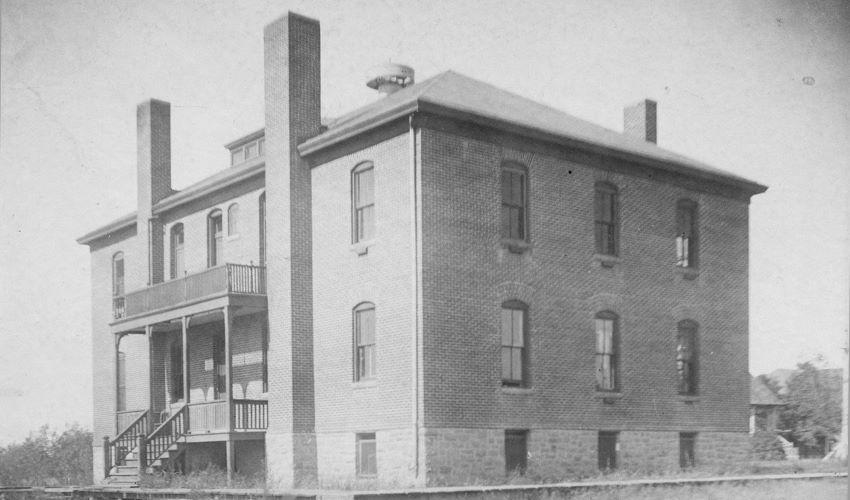
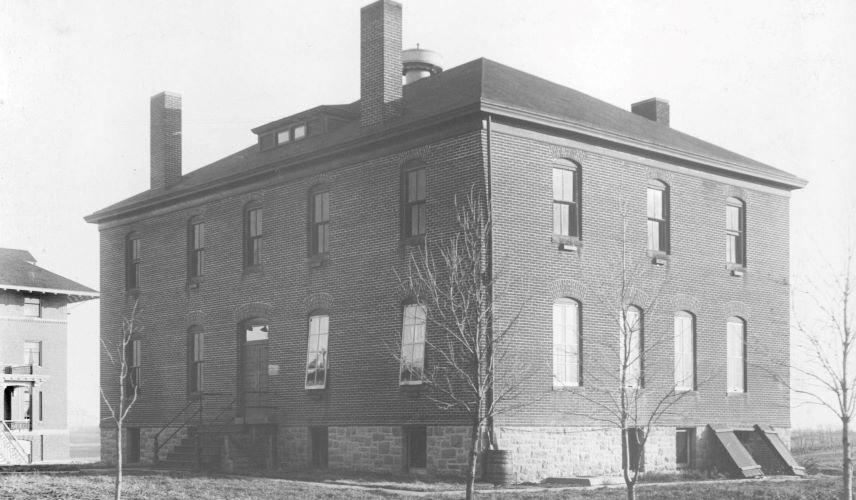
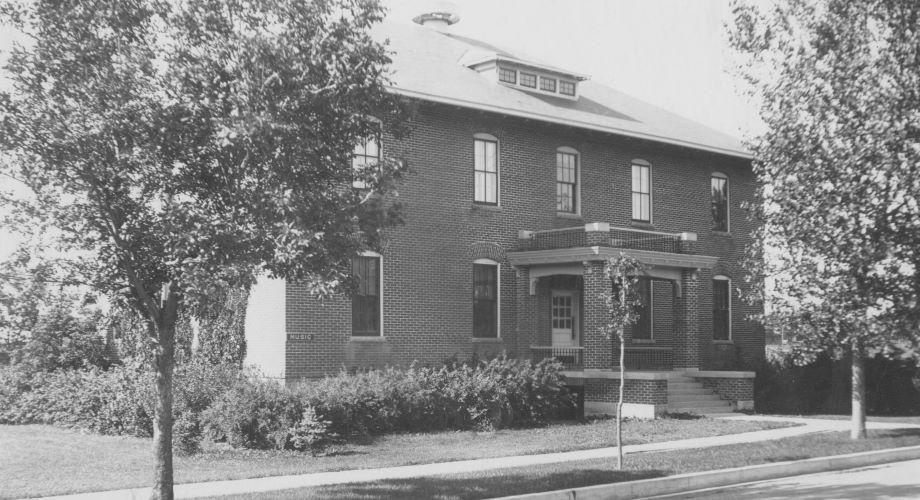
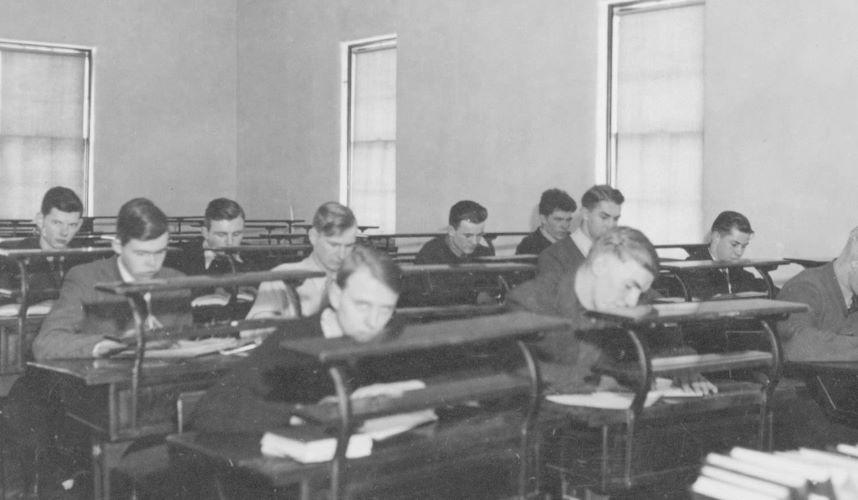
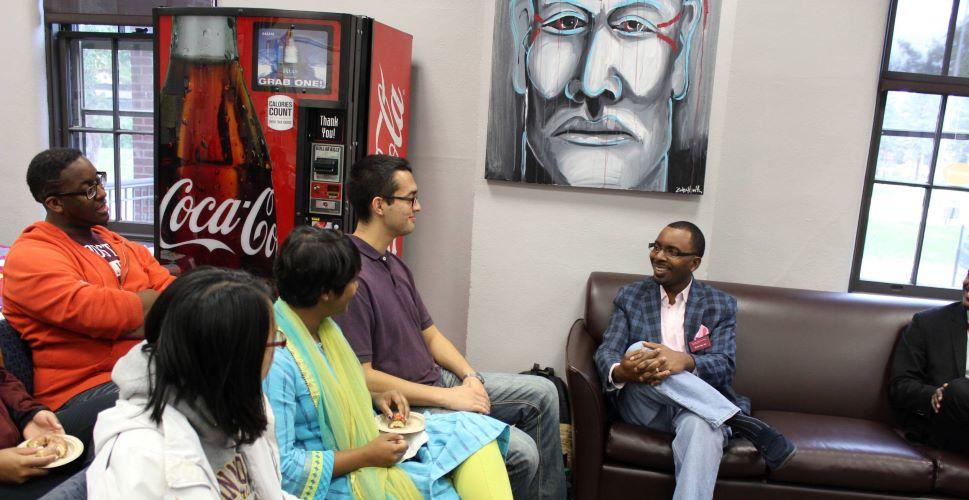
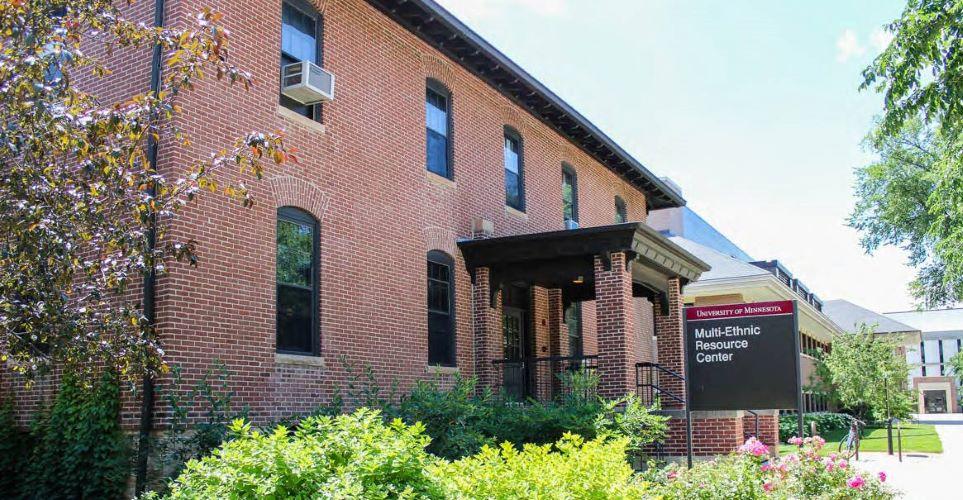
The Multi-Ethnic Resource Center (MRC) is the only campus building dating to the Native American boarding school period, and, because of its significance, it has been listed since 1984 on the National Register of Historic Places. The building was constructed in 1899, two years after the Sisters of Mercy sold the property to the federal government and was originally used as a boys’ dormitory. A twin girls’ dormitory building sat opposite, across today’s mall at the site of today’s Humanities Building, but was demolished in 1954 to make room for a new home economics building for the West Central School of Agriculture. (University of Minnesota, Morris Historic Preservation Plan)
The building is a two-story brick structure. The original dormitory was a simple, block-like structure with tin shingles, no roof overhang and four massive chimneys. In 1921 Clarence Johnston redesigned the building along craftsman lines to better fit the larger campus design scheme. With the renovation, the chimneys disappeared, the south entrance was bricked in and a new entrance and porch were added on the north side facing the mall. (National Register of Historic Places)
During the first years of the WCSA the building continued to serve as a boy’s dormitory. But in 1912 it switched functions and for the next nine years or so hosted classes in agronomy. During this time the building seems to have been formally known as “Agronomy” (The Moccasin, 1919). For much of the remainder of its WCSA career the building was known as Music Hall and was the site of both music and business classes. It also headquartered some of the school’s extracurricular groups and a few classrooms and woodworking shops were located in the basement (Granger).
The building retained its Music Hall name with the establishment of UMN Morris and before the construction of Ralph Rapson’s Humanities and Fine Arts Building it served as the center for the arts on campus “with music practice rooms, an art studio, and even a ‘little’ theatre” (Granger). During the same period the basement housed security offices, custodial services and duplicating. It seems that with the completion of the Rapson Humanities and Fine Arts Building the adjective “Old” was attached and the building was briefly known as “Old Music Hall.” Beginning in 1972 it housed the campus’s Minority Student Program (later the Equity, Diversity & Intercultural Programs Office), and at various times the offices for MPIRG (Minnesota Public Interest Research Group), student newspapers, and the Women’s Center.
Morris Indian School Boys Dormitory
This building was constructed in 1899 during the time the Morris Indian School was run on this land and was used as a boys dormitory.
Agronomy
In 1912, during the WCSA days, the building changed functions and became a classroom building for agronomy courses, and was thusly renamed.
Music Hall
The Agronomy Building became Music Hall in 1921, and was the site of both music and business classes. The building kept that name for the remainder of the WCSA years and some of the UMN Morris years.
Old Music Hall
With the completion of the HFA Building at UMN Morris, Music Hall became Old Music Hall and began housing the Minority Student Program and other offices.
Minority Resource Center (MRC)
The building changed from Old Music Hall to the Minority Resource Center (MRC) in 1989, reflecting that the building housed the Minority Student Program and other offices.
Multi-Ethnic Resource Center (MRC)
Based on campus maps in the UMN Morris catalog, it appears that the Minority Resource Center changed to the Multi-Ethnic Resource Center ca. 2007